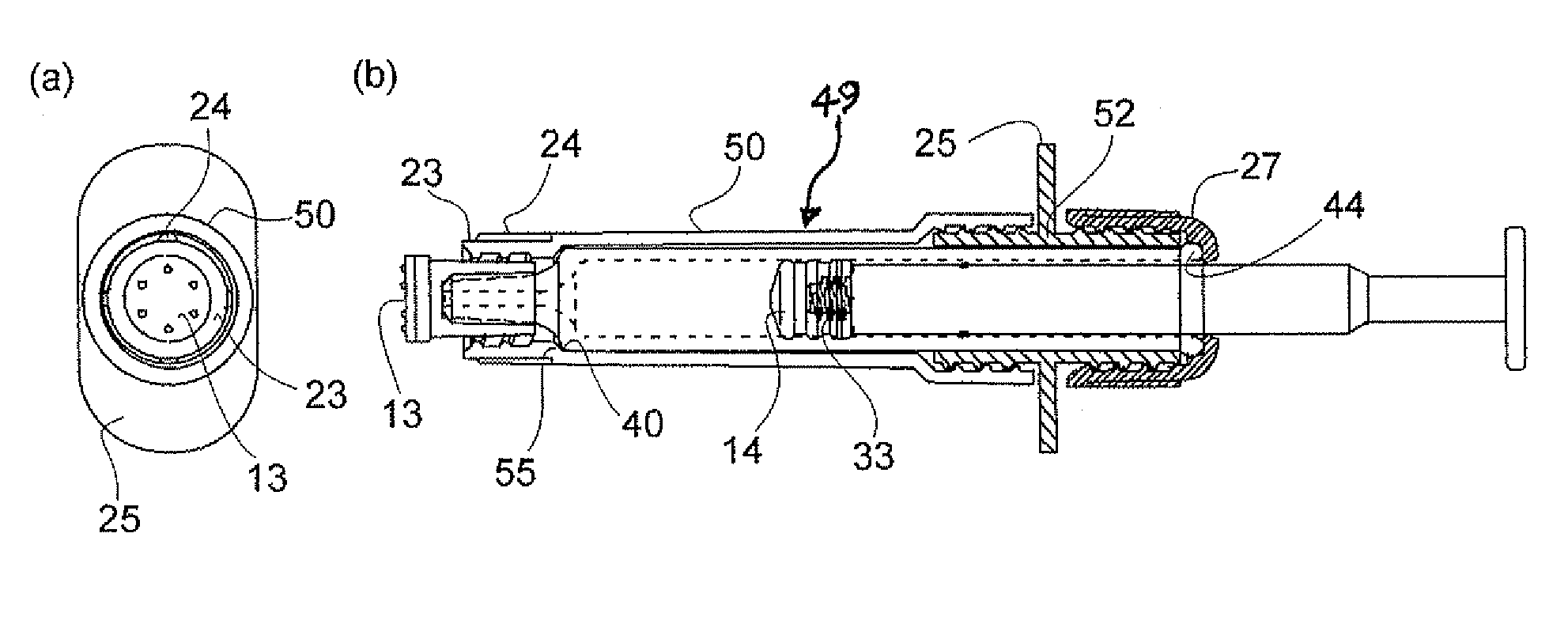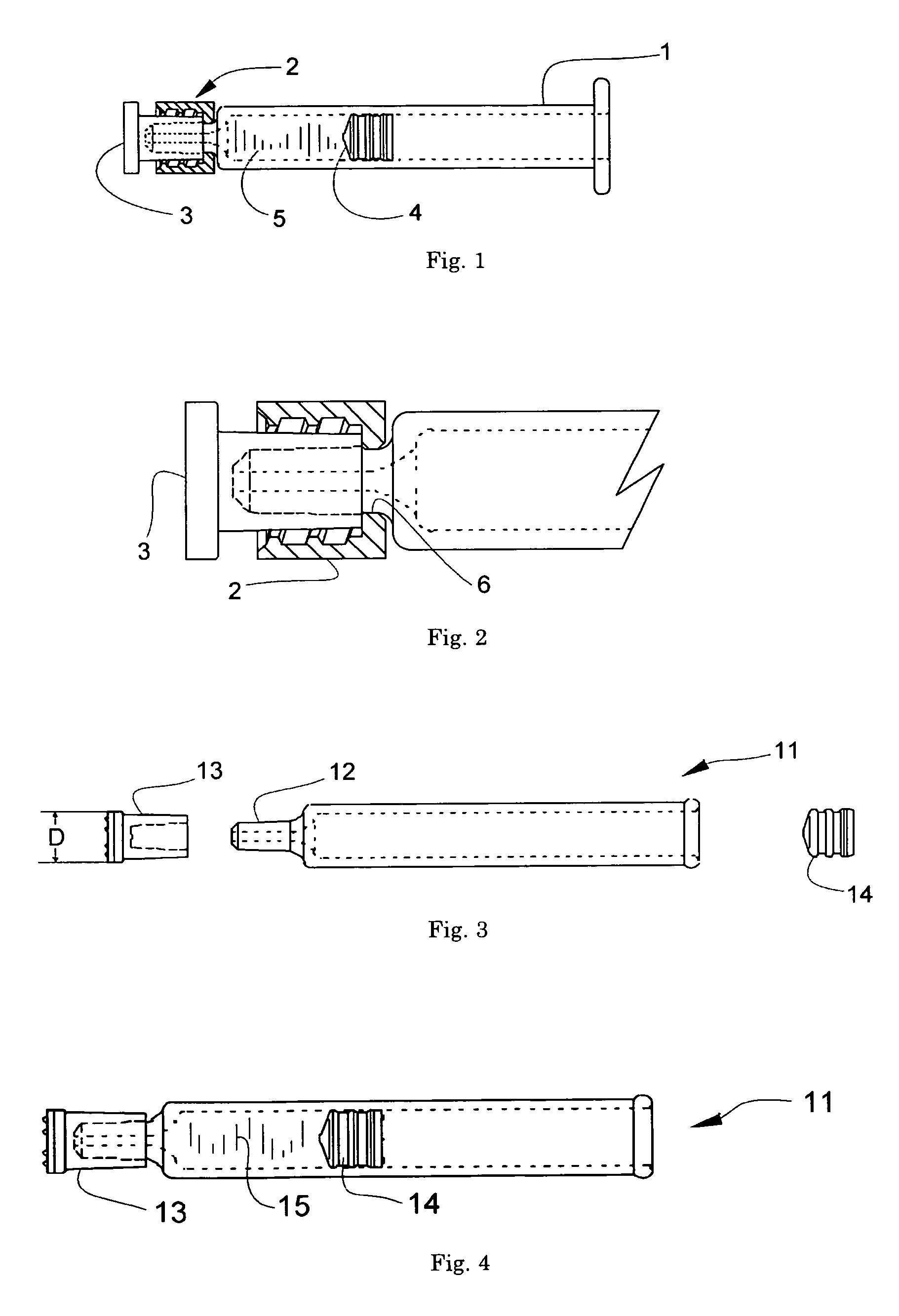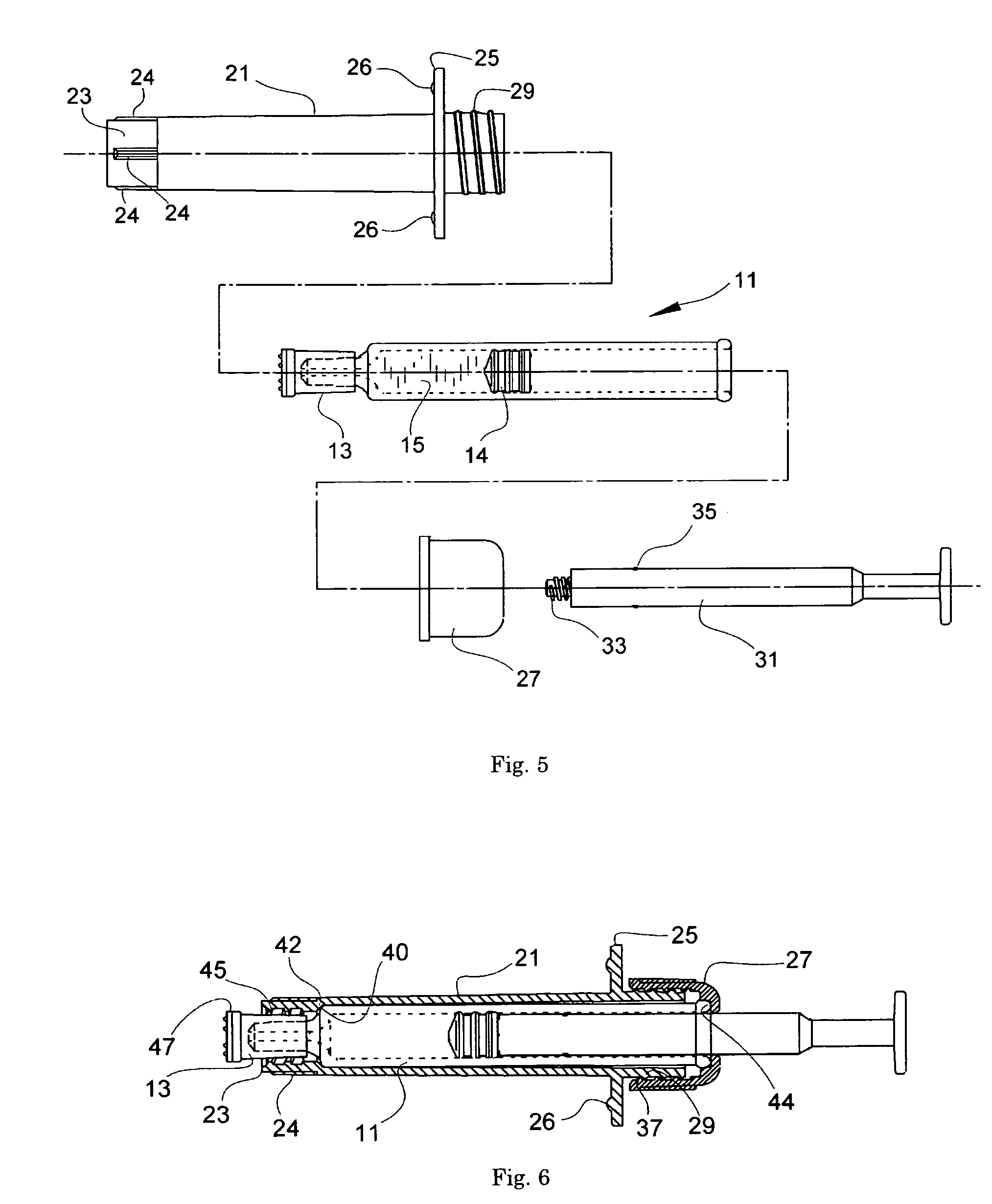Syringe holder and injection device
a syringe and sleeve technology, applied in the field of syringe holder, can solve the problems of difficult to improve the production efficiency as a whole, substantial cost, and inability to resist the plastic female threaded sleeve attached to it, so as to reduce the number of parts, improve production efficiency, and ensure the connection. unfailing
- Summary
- Abstract
- Description
- Claims
- Application Information
AI Technical Summary
Benefits of technology
Problems solved by technology
Method used
Image
Examples
example 1
[0060]FIG. 3 illustrates a side view of a cylindrical glass syringe 11, a synthetic rubber cap 13 and a synthetic rubber gasket 14, which are used in the present invention. Numeral 12 indicates the male luer at the tip of the syringe. Regarding the cap 13, “D” indicates the maximum outer diameter, which is 7 mm in this example. FIG. 4 illustrates the parts shown in FIG. 3 which has been assembled. Numeral 15 indicates an injection liquid which has filled the syringe.
[0061]FIG. 5 is an assembly drawing illustrating a syringe holder before assembly and indicating the positional relationship of the parts when the syringe 11 filled with the injection liquid 15 is inserted into the syringe holder of the present invention and then a piston rod is attached to assemble the injection device. In the figure, numeral 21 indicates a barrel portion which constitutes a part of the syringe holder and is formed of polycarbonate. At the distal end of the barrel portion 21 extends a female-threaded sl...
example 2
[0063]FIG. 7 illustrates an end view of the distal end (a) and a side view (b), of the assembled injection device of another example, with a portion shown in a cross section. In the figure, the syringe 11, cap 13, gasket 14 and piston rod 31 are identical to those in Example 1. This example differs from Example 1 in that the barrel portion 49 of the syringe holder here is composed of a distal portion 50 and a proximal portion 52. The finger rest 25 is integrally molded with the proximal portion 52 of the barrel portion, and the distal portion 50 of the barrel portion is screw-fixed, forward of the finger rest 25, on the proximal portion 52 of the barrel portion. While the wall of the syringe 11 has increased thickness at its proximal end 44 and, as a result, enlarged outer diameter there, the inner diameter of the proximal portion 52 of the barrel portion is smaller than the outer diameter of the distal end of the syringe. Therefore, the syringe 11 cannot forwardly advance from the ...
PUM
 Login to View More
Login to View More Abstract
Description
Claims
Application Information
 Login to View More
Login to View More - R&D
- Intellectual Property
- Life Sciences
- Materials
- Tech Scout
- Unparalleled Data Quality
- Higher Quality Content
- 60% Fewer Hallucinations
Browse by: Latest US Patents, China's latest patents, Technical Efficacy Thesaurus, Application Domain, Technology Topic, Popular Technical Reports.
© 2025 PatSnap. All rights reserved.Legal|Privacy policy|Modern Slavery Act Transparency Statement|Sitemap|About US| Contact US: help@patsnap.com



